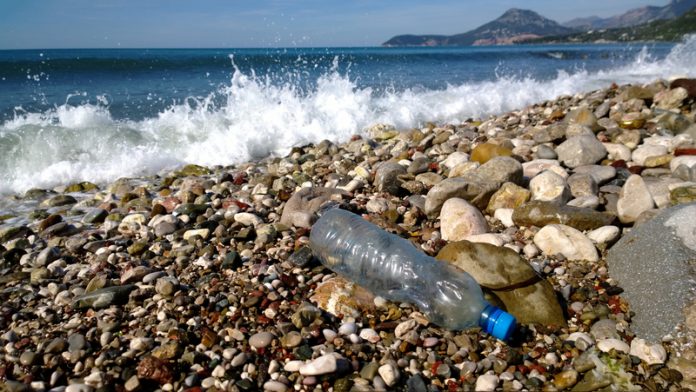Inez Cornell, Marketing Manager at Radleys tells us her top tips for plastic use and sustainability in the laboratory
When the first fully synthetic plastic was invented in 1907 no one anticipated it would become a major environmental problem.
Plastic pollution is now such a widespread issue that this year’s Earth Day in April was dedicated to ending it. In this article, Radleys covers five tips for reducing the reliance on plastic.
Why plastic is the problem
Unfortunately, one of plastic’s most lauded properties – it’s durability, is also one of the reasons it is such a problem. Plastic is so durable it can take hundreds of years to biodegrade. A plastic bottle, for example, takes roughly 450 years.
Then there’s the issue with disposing of all the plastic we use. Lots of it ends up in landfill sites, or in our oceans, where it is ingested by marine life and ends up in the food chain. We don’t yet know how this affects human health. The materials used to produce some types of plastic can also be an environmental problem because plastic is often made from hydrocarbon molecules that are derived from petrochemicals.
These figures show the staggering amount of waste plastic produces:
The total volume of plastic produced to date is estimated to be 8.3 billion tonnes. By 2015, plastic had already generated 6.3 billion tonnes of waste and 79% of this is now in landfill sites or the natural environment.
About 10 million tonnes of plastic is estimated to end up in the oceans each year.
A survey by Plymouth University estimated plastic is found in a third of fish caught in the UK, including widely eaten species such as cod, haddock and mackerel.
A study by the Ellen MacArthur Foundation found that if current trends continue, plastic will outweigh the amount of fish in the ocean by 2050. It takes two-litres of water to produce the plastic for a one-litre bottle.
Scientific use
Scientific research contributes a significant amount of this plastic waste. Globally, it is estimated to produce five and a half million tonnes of plastic. Bio-scientific research alone is thought to be responsible for 1.8% of total global plastic production.
Plastic has a few properties that make it useful in the lab like being shatterproof, durable and lightweight. Widely used lab equipment such as multi-well plates, pipettes, bottles, flasks, vials and culture plates are all commonly made of plastic. To reduce the impact this is having on the environment, it is worth taking the following steps.
Look at your buying behaviours
Using plastic sustainably starts when you make the decision about what to buy and who to buy it from. It is, therefore, worth spending some time doing research into how your suppliers produce their plastic. Do they try to minimise the carbon footprint of their manufacturing process by taking steps like reducing their energy consumption and not using harmful chemicals?
You can also ask your supplier to cut down on unnecessary plastic packaging when they deliver your products. Some suppliers also have recycling programmes you can use when disposing of your plastic.
Also, consider what the plastic is made from. Polypropylene (PP) or high-density polyethylene (HDPE) materials are widely used for lab equipment and are recyclable. Be sure to opt for lab grade plastic which doesn’t contain additives like plasticizers which can leach out.
How to reduce
Just because you’ve always used plastic for certain tasks, it doesn’t mean there aren’t other options out there. For example, in some cases, you might be able to use glass graduated cylinders instead of conical tubes. You can also get glass pipette tips and glass Petri dishes. Bulk buying is also a good way of minimising the carbon footprint when ordering your plastic consumables.
Can it be reused?
There is a tendency to treat plastic in the lab as a consumable when it may be possible to use some items more than once. Styrofoam cooling boxes, for example, can be repurposed and used in other ways for storage.
Pipette tip boxes can also be repurposed to hold other lab supplies, or as containers for Western blots. Or, you could opt for refillable tip boxes. Conical tubes and even pipette tips can be washed and autoclaved then reused.
Time to recycle
Look at all the plastic in your lab. Do you know what can or can’t be recycled? A useful rule of thumb is that if the plastic is not characterised as a biohazard or radioactive hazard it may be possible to recycle it. Just make sure anything you recycle is decontaminated first.
Whenever you can, opt for thinner, lighter-weight plastic that is easier to compress and recycle. It is also best to avoid pipette trays and racks made of mixed plastic because these are difficult to recycle. And if you have gone to the effort of putting a recycling system in place, make sure it is easy to access and clearly explain what can and can’t be recycled.
How we can play our part
Individually, the measures you take to reduce plastic pollution may seem like a drop in the ocean but together they soon add up. So why not get behind this year’s Earth Day campaign and plan how you can reduce plastic pollution in your lab?
Inez Cornell
Marketing Manager
Radleys
Tel: +44 (0)1799 513 320











